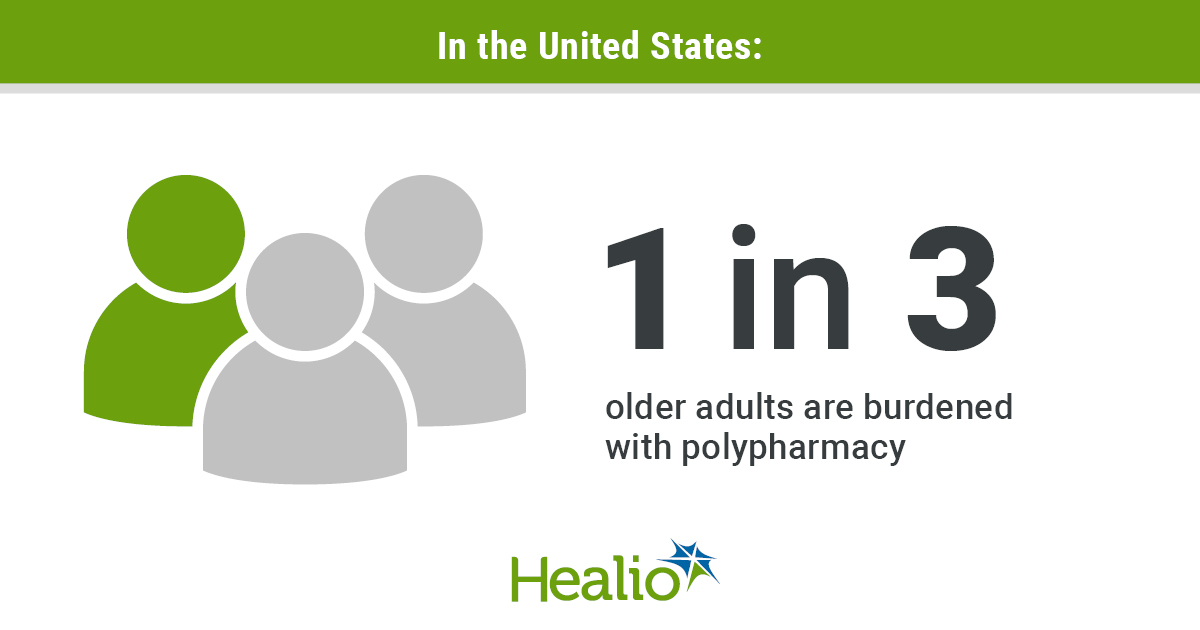Work with older patients on polypharmacy, experts say


May has been commemorated as Older Americans Month since 1963, according to the Administration for Community Living.
Nearly 1 in 3 older adults use multiple prescription drugs concomitantly, according to researchers, and patients who take five or more medications simultaneously are at risk for multiple conditions, including falls, frailty and mortality.
“A lot of times medicinal therapy gets started with really good ethical sound clinical intention,” Noll Campbell, PharmD, MS, research scientist at Indiana University Center for Aging Research at the Regenstrief Institute and the Purdue College of Pharmacy, told Healio Primary Care. “But if medications aren’t re-assessed routinely, harms (or side effects) from certain medications may be identified and outweigh the benefits.””
Campbell and Michael Steinman, MD, professor of medicine in the geriatrics division at the University of California, San Francisco, and the San Francisco VA Medical Center, said physicians should work in unison with their older patients to prevent the negative consequences of polypharmacy.

Simply building reminder tools into electronic health records to discuss medications with the patient is usually not enough, Steinman said in an interview. “A lot of us are exposed to frequent clinical reminders, but many of those are perceived as useless or annoying.”
He noted that patient participation in his or her medication management may increase when physicians include a medication review as an item on the patients’ problem list. For example, Steinman said that when a patient comes in for a current problem tied to CVD or diabetes, in addition to addressing that issue, he might see the medication review item on the problem list and use it as an opportunity to “systematically review” each medication with the patient to ensure it is still needed.
Avoiding polypharmacy is “not just about having medication information recorded somewhere,” he said. “It’s about accessing patients’ information on a regular basis and structuring it into the workflow during patient assessments.”
Steinman said the “key challenge” is making time to conduct the review.
Campbell added that scheduling visits dedicated solely to medication review, using team-based care models and providing patients with educational resources may eliminate time barriers.
Every 3 to 6 months, “use support personnel who have more frequent interactions with patients to identify what is important to the patient, how the patient is feeling and what are their priorities,” he said. “Empower patients with information that improves awareness and upports conversations that identify which medications are important to them and which they may be willing to consider stopping.
Campbell said there is a “fine line” between discussing polypharmacy and alarming patients of its consequences.
“There’s an ethical balance there,” he said. “On the one hand, raising awareness about risks of medications could raise anxiety, but creating dissonance may serve to motivate patients to make safer decisions.”
Steinman said the amount of time he allocates to these two-way discussions is based on patient’s overall health.
“For someone who is generally healthy and taking fairly few medications, it’s probably not very high on the priority list,” he said. “But if they’re taking a lot of medicines, then that can be an important trigger for thinking that this is something you need to pay extra attention to.” – by Janel Miller
References:
Administration for Community Living. Older Americans Month. https://acl.gov/oam/history. Accessed May 20, 2020.
Quinn KJ, et al. Sci Data. 2017;doi:10.1038/sdata.2017.167.
Varghese D, et al. Polypharmacy. In: StatPearls [internet]. Treasure Island, Fla.: StatPearls Publishing; 2020. https://www.ncbi.nlm.nih.gov/books/NBK532953/. Accessed May 20, 2020.
Wastesson JW, et al. Expert Opin Drug Saf. 2018;doi:10.1080/14740338.2018.1546841.
Disclosures: Campbell reports funding from the NIH’s National Institute of Aging for research related to deprescribing. Steinman reports no relevant financial disclosures.
